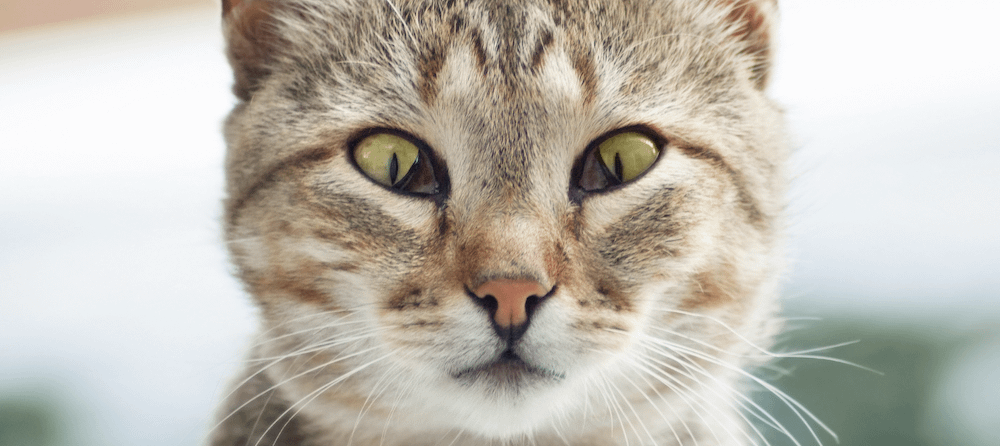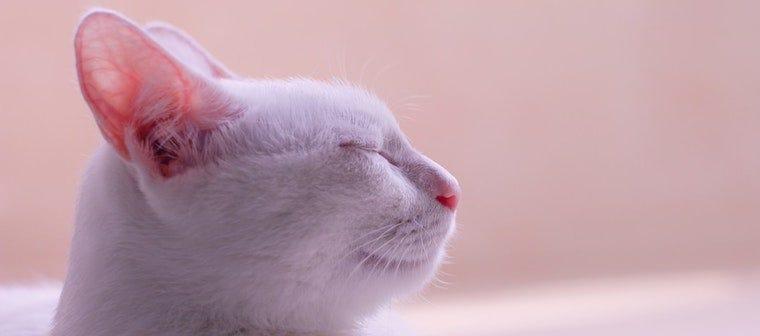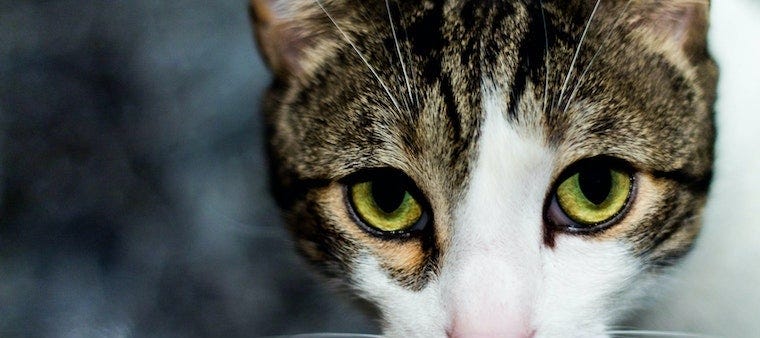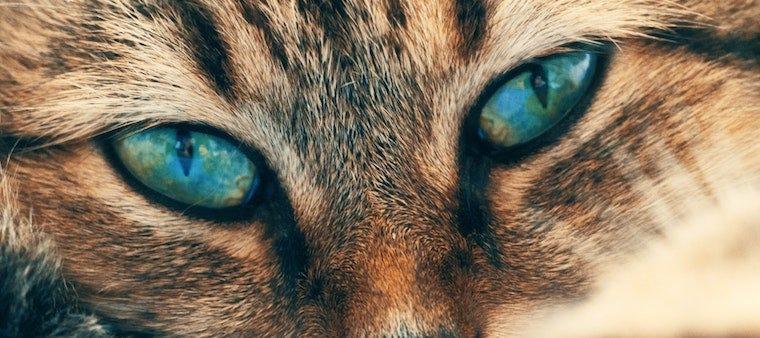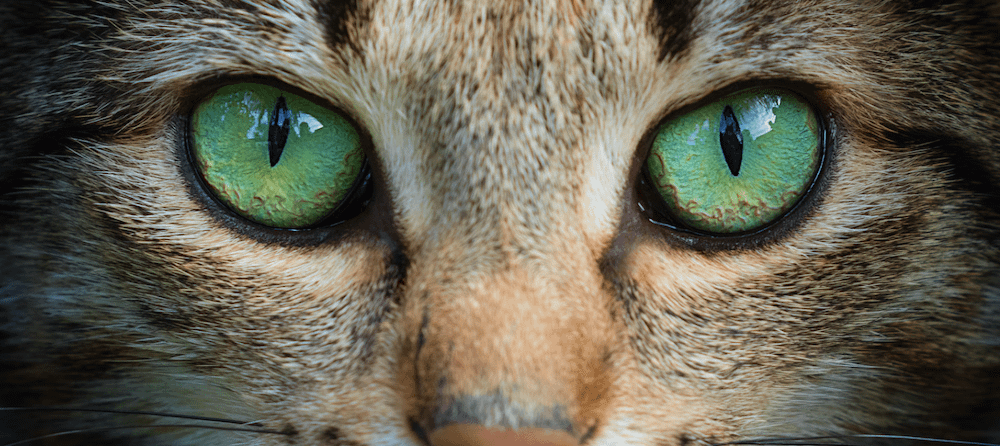It happened again: You saw your cat rouse from a deep slumber, gazing at you through eyes that appeared filmy, even translucent. They blinked a few times, and those milky layers retracted horizontally into the corners of their eyes. You breathed a sigh of relief (because it was weird, and you were glad it was over). What, exactly, was that? Turns out, you just observed your cat’s third eyelid.
What is a third eyelid?
The third eyelid is medically referred to as a nictitating membrane. This membrane is essentially an extra layer of protection for the surface of the eye, and also helps the eye stay moist. The third eyelid is sometimes described as acting much like “a windshield wiper blade” by removing debris and pollen from the surface and redistributing tears over the cornea. It is whitish-pink in color, translucent, and retracts into the inner corner of each eye (making it a somewhat disorienting spectacle for human observers).
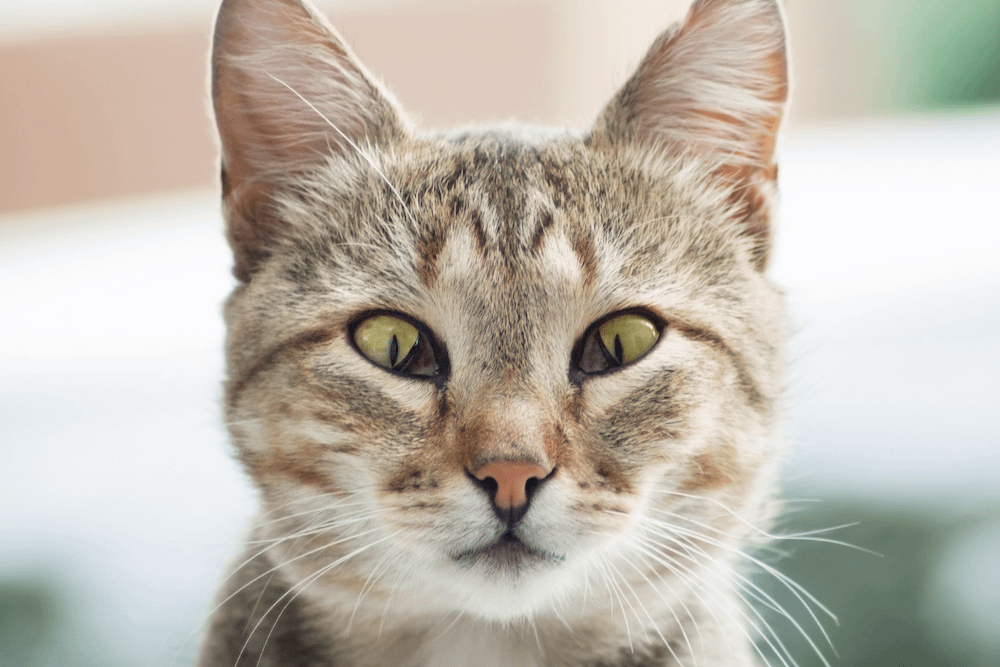
Cats and dogs both possess a third eyelid. So do birds, reptiles, amphibians, fish, and some other mammals. Your cat’s third eyelid functions as a shield for his cornea while moving through tall grass and during skirmishes with neighborhood felines or resistant prey. (Pro tip: Keep them indoors so they’ll never need that protection!)
Why don’t humans have a third eyelid?
Believe it or not, scientists think that humans did have a third eyelid, once upon a time. Through the course of evolution, the nictitating membrane was reduced to the tiny pink fold of tissue in the corner of your eye. This probably happened because, unlike cats, humans didn’t have to capture prey by biting or stalking through vegetation face-first.
Noticing your cat’s third eyelid could be a symptom
Other than those brief moments when your cat rouses from his sleep, you shouldn’t see the nictitating membrane. If your cat’s third eyelid is continuously present in one or both eyes, take them to your veterinarian to make sure that it isn’t a symptom of a bigger problem.
Eye issues
Despite the extra protection offered by the third eyelid, the eye can be particularly susceptible to injury and infection depending on your cat’s lifestyle: the symptoms or presentation associated with the eye abnormalities vary. Because the main function of the third eyelid is protective, it is a common symptom of ocular disease. Some examples of ocular problems where the third eyelid commonly protrudes are as follows:
- Uveitis: inflammation of the uvea (also known as the uveal tract), which is a part of the eye that includes the iris, the ciliary body, and the choroid.
- Conjunctivitis: the inflammation of the conjunctiva, which is the thin membrane on the inside of the eyelids and white part of the eye.
- Corneal ulceration: the loss (like a scratch) of cells in the outermost layer of tissue (epithelium) covering the cornea.
- Foreign bodies: an object in your eye that should not be there; the irritation caused by that object can cause the protrusion.
- Cherry eye: protrusion of the gland of the third eyelid.
Underlying health disorders
The third eyelid sometimes presents itself as a symptom of a change or disease process in the cat that has nothing to do with the eye. For example, a sedated cat’s third eyelids often protrude. A cat that is severely dehydrated or experiencing weight loss secondary to a separate disease process may protrude the third eyelids as well. Haws Syndrome, an elevation of the third eyelid in both eyes frequently associated with gastrointestinal (GI) inflammatory disorders, is another example.
Respiratory infection
The nictitating membrane may also appear as a symptom of feline upper respiratory infection. While there are many viruses that can cause ocular symptoms such as the protrusion of third eyelids, herpes virus is the most common. Much like in humans, herpes virus is forever in cats as well. So cats with herpes tend to have outbreaks in times of heightened stress.
Your cat’s third eyelid is a perfectly normal part of his anatomy—until it becomes obvious. When in doubt, check with your veterinarian.
Sources:
